

David Finkle is a New York-based writer who concentrates on the arts. He's currently the chief drama critic for TheaterMania.com and writes regularly on music for The Village Voice and Back Stage. He's contributed to many publications, including The New York Times, The New York Post, The Nation, The New Yorker, New York, Vogue, Harper's Bazaar and American Theatre.
When Liza Minnelli talks about her performing style and the woman who's had the most influence on it, she doesn't mention mom Judy Garland -- even though it's clear the mater helped shape her powerful techniques. No, she cites Kay Thompson, who is probably remembered today, if and when she is, for creating Eloise, the lovably spoiled brat who ran wild in the Plaza Hotel long before it was turned into the residential edifice it is now.But Thompson was more than the lady who dreamed up Eloise, giving the tyke a name taken from Catherine Louise Fink, the moniker Thompson was born with and dropped when she skipped her St. Louis birthplace and headed for Hollywood to make a reputation -- not as the classically trained musician she was but in the world of popular singing.
And did she make that reputation! By 1943, she was heading the vocal department at Metro-Goldwyn-Mayer, where she remained until 1947, when she left to put together a night-club act so ground-breaking that entertainers are still modeling their outings after her without realizing to whom they owe credit.One who does know from where she gets her "bazazz" -- a word Thompson coined for a song she wrote with Ralph "Have Yourself a Merry Little Christmas," "The Trolley Song" Blane -- is the above-mentioned Minnelli, whose recent world tour culminated in Liza's at the Palace. The breathlessly ebullient singer devoted the second half of her show to recreating Thompson arrangements. And she surrounded herself with four men (Jim Caruso, Johnny Rodgers, Cortés Alexander, Tiger Martina) standing in for Thompson's accomplices, The Williams Brothers (Dick, Don, Bob and, yes, Andy).
The act -- which received wide-spread coverage, including Life at a time when everyone read the mag -- demonstrated to ring-siders what movie-goers may not have realized from Thompson's work with MGM stars like Garland, June Allyson, Fred Astaire, Ginger Rogers and many others (some dubbed): The inventive lady was -- and remains -- one of the greatest vocal arrangers who ever took on a standard and revitalized it or an incipient standard and vitalized it.
Thompson died in 1998 and so isn't here to recreate the act, and Minnelli wasn't able to run though everything Thompson ever recorded. Never mind. Much of what Thompson did record from the late thirties on has been collected by Sepia for a three-CD collection, Think Pink! -- the tag a reference most fans of movie musicals will instantly recognize as the title song long-time associates Roger Edens and Leonard Gershe wrote for her to give a typically exhilarating lift in the 1955 Funny Face, where she shared screen-time with Astaire and Audrey Hepburn (doing her own warbling.)
The release is a must-have for anyone claiming to be interested in first-rate singing, first-rate songs and first-rate arrangements. It may be the last of the three elements for which Thompson most deserves to be cherished. A familiar voice in the 30's, Thompson infused her interpretations with cheer and passion -- listen to her take on "These Are the Things I Love," which seems to be plucked from a radio performance--but it is what she does when she's upbeat that electrifies. As if to underscore the brass in her, there are almost always busy brass flourishes.
If there is one quintessential Thompson arrangement, it may be the one she and the Williams Brothers blare on Cole Porter's "Just One of Those Things" -- which has to be heard to be believed. The liberties Thompson takes with the words and the music are presumptuous, cheeky. Where Porter writes "just one of those fabulous flights," Thompson -- always happy to throw in some franglais and even something Latinate -- sings, "oh, quelle fabuli nights." Behind her, the Williamses have been strenuously intoning "things, things, things." At one and the same time, the bongo-driven cut is -- like so many of the cuts here -- outrageous, irresistible, bracing, hilarious.(If Porter's reaction when he heard it--and he surely did--is logged anywhere, it's not available to me, but he had to love it.)
Of the 71 -- count 'em, 71 -- tracks that Sepia incorporates (much of it from, apparently, the collections of Michael Feinstein and Sam Irvin), there are any number that cause ears to sit up and say howdy. There's Thompson auditioning "Think Pink" with Roger Edens at the piano. There's Thompson singing "The Trolley Song" with Conrad Salinger's movie arrangement on a 1944 Texaco Star Theater radio edition. There's Thompson singing "In the Valley (Where the Evening Sun Goes Down)" with Garland, a Harry Warren-Johnny Mercer song used in The Harvey Girls (1946). Other guests vibrating are Bing Crosby, Danny Kaye, Tony Martin, Peter Lorre and Ann Miller singing and tapping out "Madame Crematante," the Garland turn from the 1946 Ziegfeld Follies.How influential was Kay Thompson? Try imagining MGM musicals without her? Can't be done.
Books & More From David Finkle
And did she make that reputation! By 1943, she was heading the vocal department at Metro-Goldwyn-Mayer, where she remained until 1947, when she left to put together a night-club act so ground-breaking that entertainers are still modeling their outings after her without realizing to whom they owe credit.One who does know from where she gets her "bazazz" -- a word Thompson coined for a song she wrote with Ralph "Have Yourself a Merry Little Christmas," "The Trolley Song" Blane -- is the above-mentioned Minnelli, whose recent world tour culminated in Liza's at the Palace. The breathlessly ebullient singer devoted the second half of her show to recreating Thompson arrangements. And she surrounded herself with four men (Jim Caruso, Johnny Rodgers, Cortés Alexander, Tiger Martina) standing in for Thompson's accomplices, The Williams Brothers (Dick, Don, Bob and, yes, Andy).
The act -- which received wide-spread coverage, including Life at a time when everyone read the mag -- demonstrated to ring-siders what movie-goers may not have realized from Thompson's work with MGM stars like Garland, June Allyson, Fred Astaire, Ginger Rogers and many others (some dubbed): The inventive lady was -- and remains -- one of the greatest vocal arrangers who ever took on a standard and revitalized it or an incipient standard and vitalized it.
Thompson died in 1998 and so isn't here to recreate the act, and Minnelli wasn't able to run though everything Thompson ever recorded. Never mind. Much of what Thompson did record from the late thirties on has been collected by Sepia for a three-CD collection, Think Pink! -- the tag a reference most fans of movie musicals will instantly recognize as the title song long-time associates Roger Edens and Leonard Gershe wrote for her to give a typically exhilarating lift in the 1955 Funny Face, where she shared screen-time with Astaire and Audrey Hepburn (doing her own warbling.)
The release is a must-have for anyone claiming to be interested in first-rate singing, first-rate songs and first-rate arrangements. It may be the last of the three elements for which Thompson most deserves to be cherished. A familiar voice in the 30's, Thompson infused her interpretations with cheer and passion -- listen to her take on "These Are the Things I Love," which seems to be plucked from a radio performance--but it is what she does when she's upbeat that electrifies. As if to underscore the brass in her, there are almost always busy brass flourishes.
If there is one quintessential Thompson arrangement, it may be the one she and the Williams Brothers blare on Cole Porter's "Just One of Those Things" -- which has to be heard to be believed. The liberties Thompson takes with the words and the music are presumptuous, cheeky. Where Porter writes "just one of those fabulous flights," Thompson -- always happy to throw in some franglais and even something Latinate -- sings, "oh, quelle fabuli nights." Behind her, the Williamses have been strenuously intoning "things, things, things." At one and the same time, the bongo-driven cut is -- like so many of the cuts here -- outrageous, irresistible, bracing, hilarious.(If Porter's reaction when he heard it--and he surely did--is logged anywhere, it's not available to me, but he had to love it.)
Of the 71 -- count 'em, 71 -- tracks that Sepia incorporates (much of it from, apparently, the collections of Michael Feinstein and Sam Irvin), there are any number that cause ears to sit up and say howdy. There's Thompson auditioning "Think Pink" with Roger Edens at the piano. There's Thompson singing "The Trolley Song" with Conrad Salinger's movie arrangement on a 1944 Texaco Star Theater radio edition. There's Thompson singing "In the Valley (Where the Evening Sun Goes Down)" with Garland, a Harry Warren-Johnny Mercer song used in The Harvey Girls (1946). Other guests vibrating are Bing Crosby, Danny Kaye, Tony Martin, Peter Lorre and Ann Miller singing and tapping out "Madame Crematante," the Garland turn from the 1946 Ziegfeld Follies.How influential was Kay Thompson? Try imagining MGM musicals without her? Can't be done.
Books & More From David Finkle














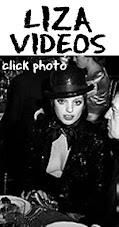


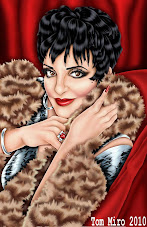

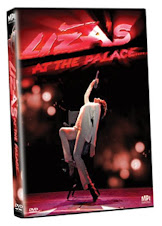



























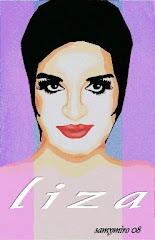


























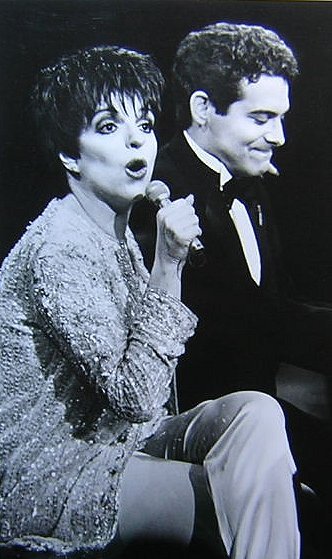


































No comments:
Post a Comment